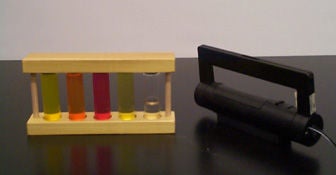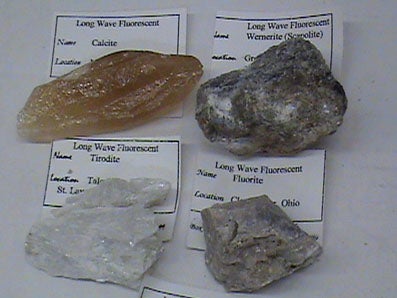MP.6(1) – Fluorescent Liquids Set
One can demonstrate how fluorescence is dependent on the wave length of light presented. Five different colors can be observed when UV light is used.

MP.6(2) – Fluorescent Minerals Set
This is a sample of five different minerals, which fluoresces under ultraviolet light.

MP.6(3) – Phosphorescence
Phosphorescence is a specific type of photoluminescence related to fluorescence, but unlike fluorescence, a phosphorescent material does not immediately re-emit the radiation it absorbs. The slower time scales of the re-emission are associated with “forbidden” energy state transitions in quantum mechanics. Since these transitions occur less often in certain materials, absorbed radiation may be re-emitted at a lower intensity for up to several hours. A blue laser (405 nm) can be used to demonstrate this effect on a phosphorescent screen.
Click here to see a video of this demo.